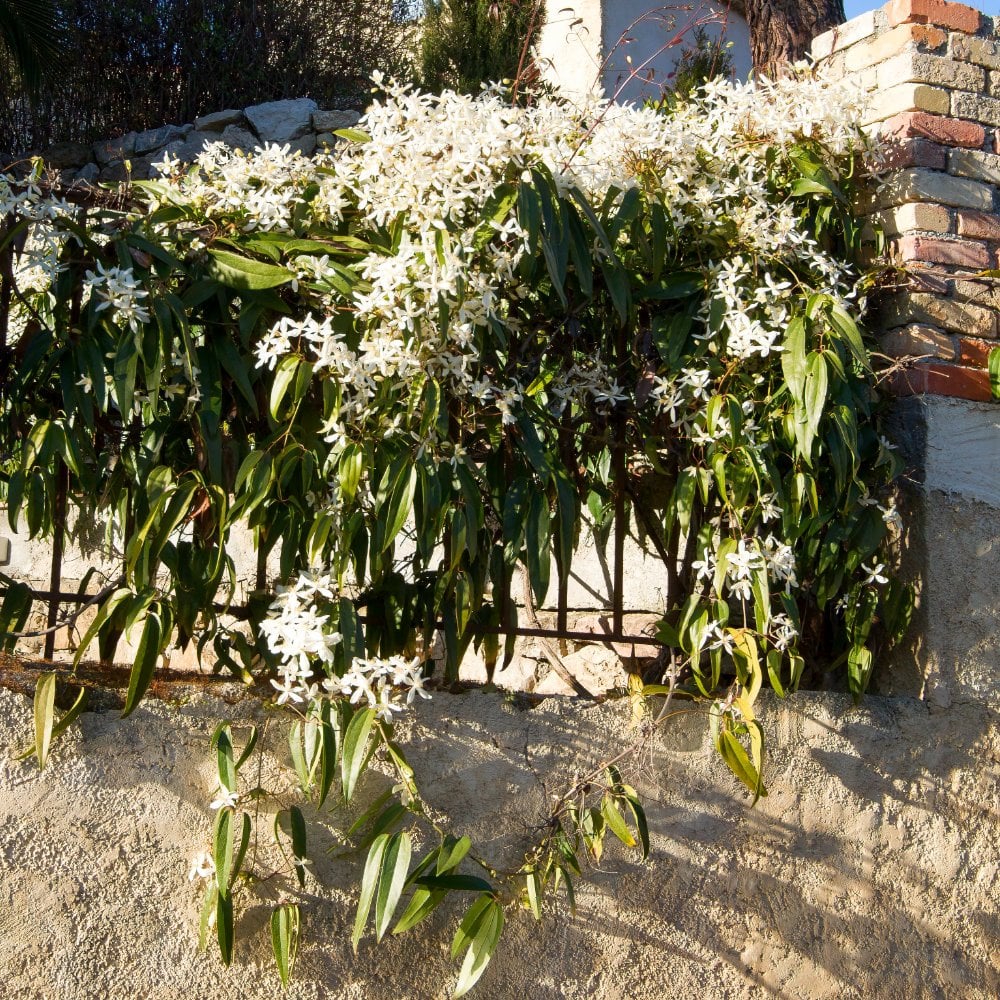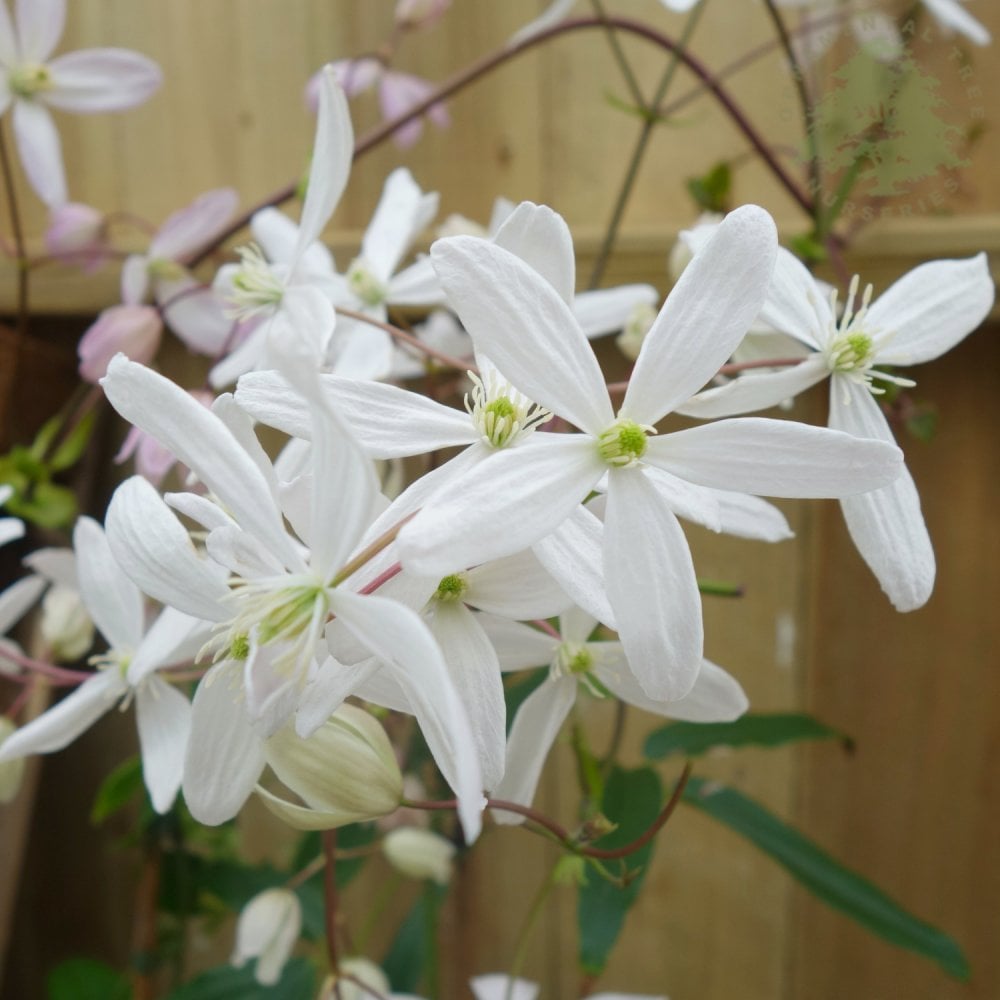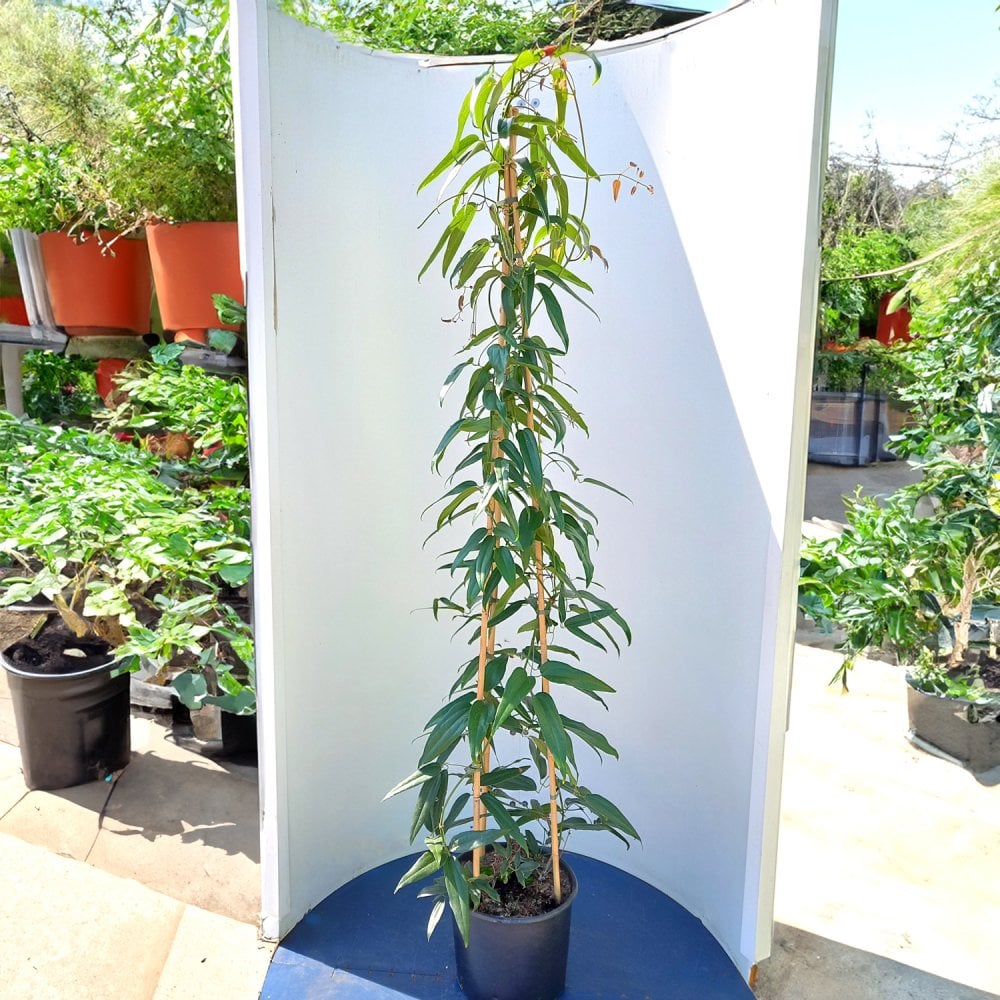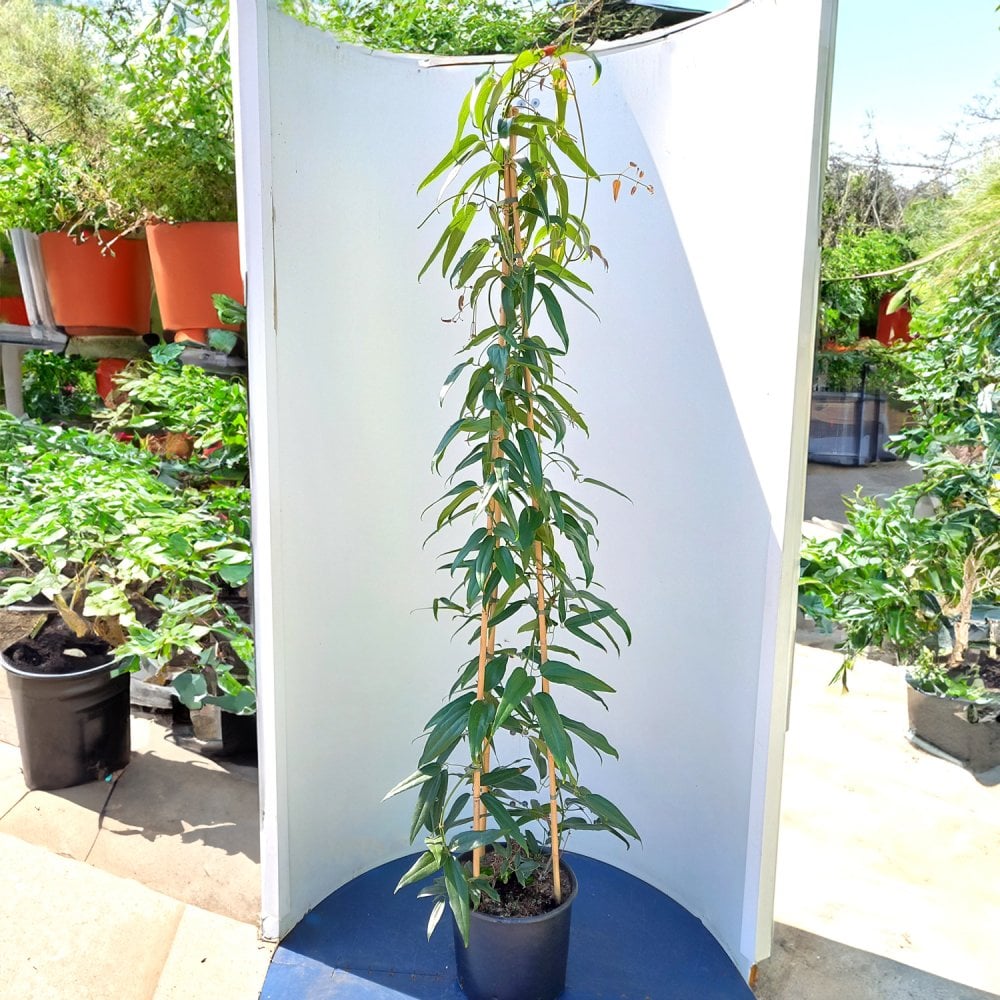Clematis armandii
Clematis armandii
Evergreen Climbing Clematis

Clematis armandii
Evergreen Climbing Clematis





Key features





Description
Clematis armandii, also known as Armand clematis, is an attractive evergreen twining climber, ideal for year-round interest and screening. As it doesn’t lose its waxy green foliage, Clematis armandii would be an excellent choice for those looking to permanently obscure an ugly wall or brickwork. Adding to its appeal are the creamy white, star-shaped flowers which emerge in early spring, bringing with them a very pleasant almond scent. The flowers are popular with essential pollinators including bees and butterflies and look lovely against the backdrop of lush green foliage.
Plant Clematis armandii against a climbing support in a sheltered position within the garden where its fragrance can be enjoyed. Armand clematis prefers a moist, well-draining soil and full sun for the best blooms, so a sunny wall, trellis or pergola would be perfect. In 20 years you can expect Clematis armandii to reach an approximate height and spread of 5 x 3 metres. Armand is in Clematis group 1 for pruning.
| Small shrubs (1-3) | Young trees & 4+ small shrubs | Select semi-mature trees & shrubs (1-4) | All other mature trees (any quantity) | |
|---|---|---|---|---|
| Mainland UK ex. Scottish Highlands | £10 | £12 | £35 | from £55 |
| Scottish Highlands & the Islands | From £30 | |||
| Outside Mainland UK | Currently we are unable to deliver outside of Mainland UK | |||
Product Details
Key features





Description
Clematis armandii, also known as Armand clematis, is an attractive evergreen twining climber, ideal for year-round interest and screening. As it doesn’t lose its waxy green foliage, Clematis armandii would be an excellent choice for...
Clematis armandii, also known as Armand clematis, is an attractive evergreen twining climber, ideal for year-round interest and screening. As it doesn’t lose its waxy green foliage, Clematis armandii would be an excellent choice for those looking to permanently obscure an ugly wall or brickwork. Adding to its appeal are the creamy white, star-shaped flowers which emerge in early spring, bringing with them a very pleasant almond scent. The flowers are popular with essential pollinators including bees and butterflies and look lovely against the backdrop of lush green foliage.
Plant Clematis armandii against a climbing support in a sheltered position within the garden where its fragrance can be enjoyed. Armand clematis prefers a moist, well-draining soil and full sun for the best blooms, so a sunny wall, trellis or pergola would be perfect. In 20 years you can expect Clematis armandii to reach an approximate height and spread of 5 x 3 metres. Armand is in Clematis group 1 for pruning.
Planting & Care
Delivery Information
| Small shrubs (1-3) | Young trees & 4+ small shrubs | Select semi-mature trees & shrubs (1-4) | All other mature trees (any quantity) | |
|---|---|---|---|---|
| Mainland UK ex. Scottish Highlands | £10 | £12 | £35 | from £55 |
| Scottish Highlands & the Islands | From £30 | |||
| Outside Mainland UK | Currently we are unable to deliver outside of Mainland UK | |||
MORE TO GROW YOUR GARDEN




















